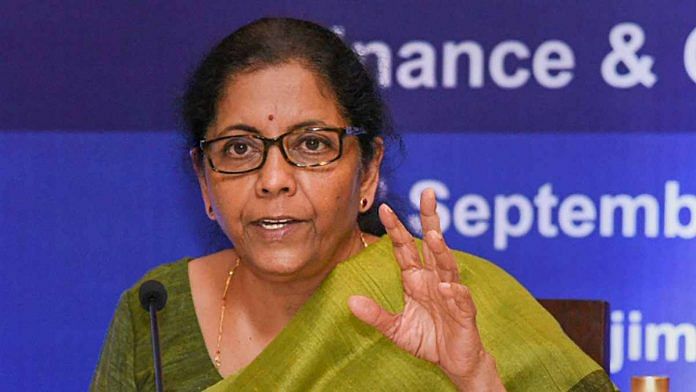New Delhi: The Union Ministry of Statistics and Programme Implementation (MOSPI) will release the first advance estimates of India’s gross domestic product (GDP) for 2019-20 Tuesday.
The estimates will be based on the growth numbers of the first two quarters of the current fiscal as well as other higher frequency data.
The data is typically released one month ahead of the presentation of the Union budget. Prior to 2017, the first advance estimate used to be released in the last week of January as the budget was presented on 28 February. However, since 2017, the data has been released in the first week of January to help the government prepare its budget presented on 1 February.
ThePrint lists why these set of numbers are significant.
Why will the numbers be keenly watched?
The numbers will be released at a time when the Indian economy has seen a sharp slowdown in growth, surprising policy-makers. The Indian economy grew at a six-year low of 5 per cent and 4.5 per cent, respectively, in the quarters ending June and September. These set of numbers forced the Reserve Bank of India to drastically reduce its growth projections for 2019-20 to 5 per cent from its initial estimate of 7.4 per cent.
The first advanced estimates will acknowledge the slowdown and estimate the GDP in both constant and current prices.
Also read: Fall in GDP growth needs to be reversed before it becomes a sustained downward spiral
Why are these numbers significant?
These numbers will help in the government’s budget-making process. Estimates of growth will help in calculating deficit numbers for the current fiscal. It will also form the basis for the government to estimate the growth numbers for 2020-21 to help in the tax collection and buoyancy and fiscal deficit estimates for the next fiscal.
What will be the implication of lower GDP numbers for Nirmala Sitharaman?
Slowing tax collections due to the economic slowdown and a shortfall in disinvestment receipts means that Finance Minister Nirmala Sitharaman is faced with a sharp increase in the absolute fiscal deficit numbers.
A lower than estimated GDP number will mean the fiscal deficit as a percentage of GDP may also come in substantially higher than budgeted.
The 2019-20 budget presented by Sitharaman in July 2019 had estimated India’s nominal GDP in 2019-20 at Rs 211 lakh crore, a growth of 12 per cent over the estimated Rs 188 lakh crore in 2018-19.
However, nominal GDP growth in the second quarter was only at around 6 per cent and at 8 per cent in the first quarter. This is an indication that nominal GDP growth in 2019-20 will be far short of the 12 per cent estimated in the budget.
Further, fiscal deficit for 2019-20 was estimated at 3.3 per cent of GDP. However, the Modi government is expecting a slippage.
Will there be further revisions in GDP data?
MOSPI will release the second advance estimate of GDP on 28 February along with the GDP numbers for the quarter ended December. It will release the full year growth numbers for 2019-20 on 29 May along with the GDP numbers for the quarter ended March.
An analysis of previous years’ data shows that the final growth numbers differ from the first advance estimates.
For instance, for the year 2018-19, the first advance estimates showed that GDP will grow at 7.2 per cent in the year while the growth eventually was 6.8 per cent.
Also read: In just 4 months as finance minister, Nirmala Sitharaman has become face of India’s slowdown






